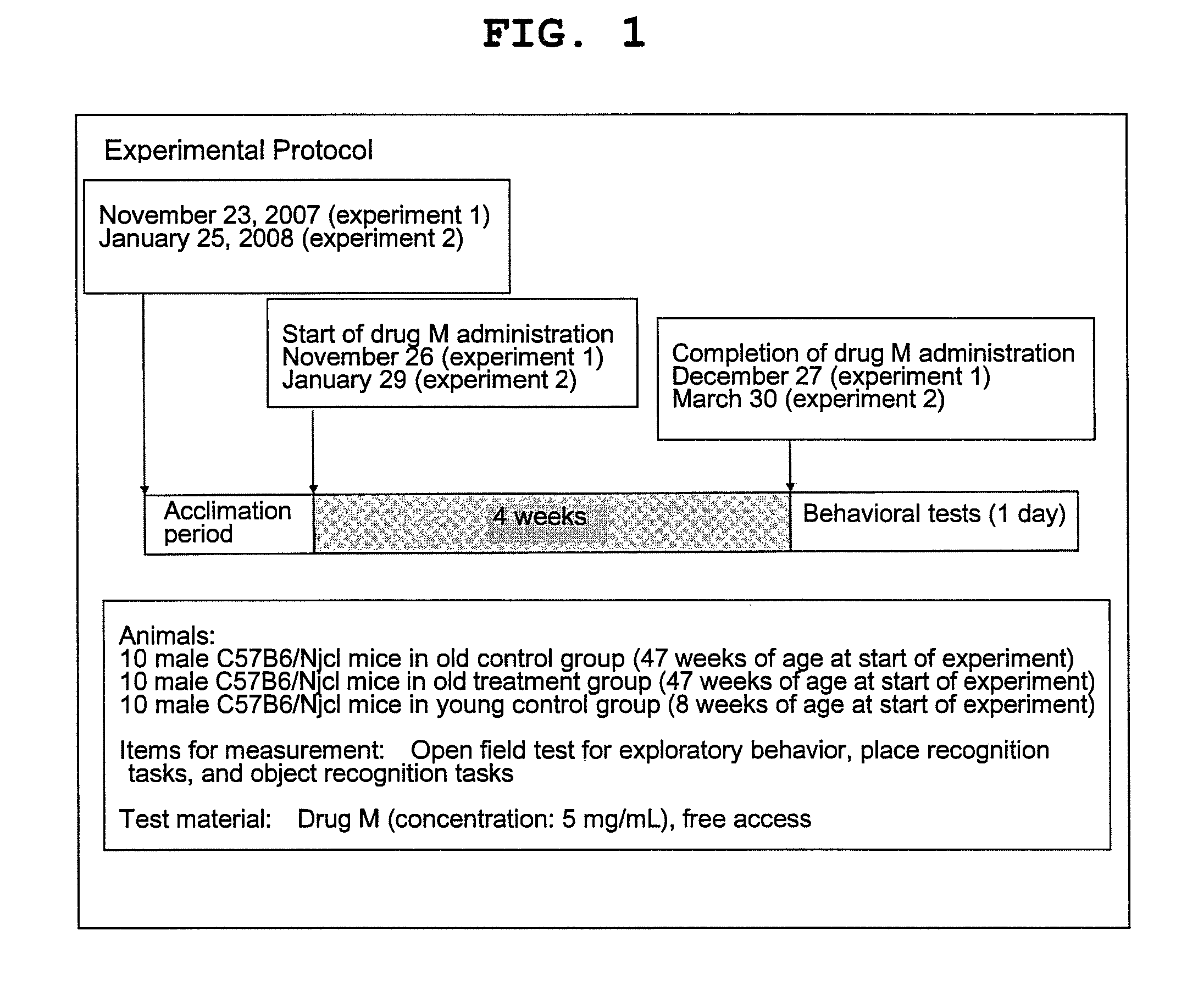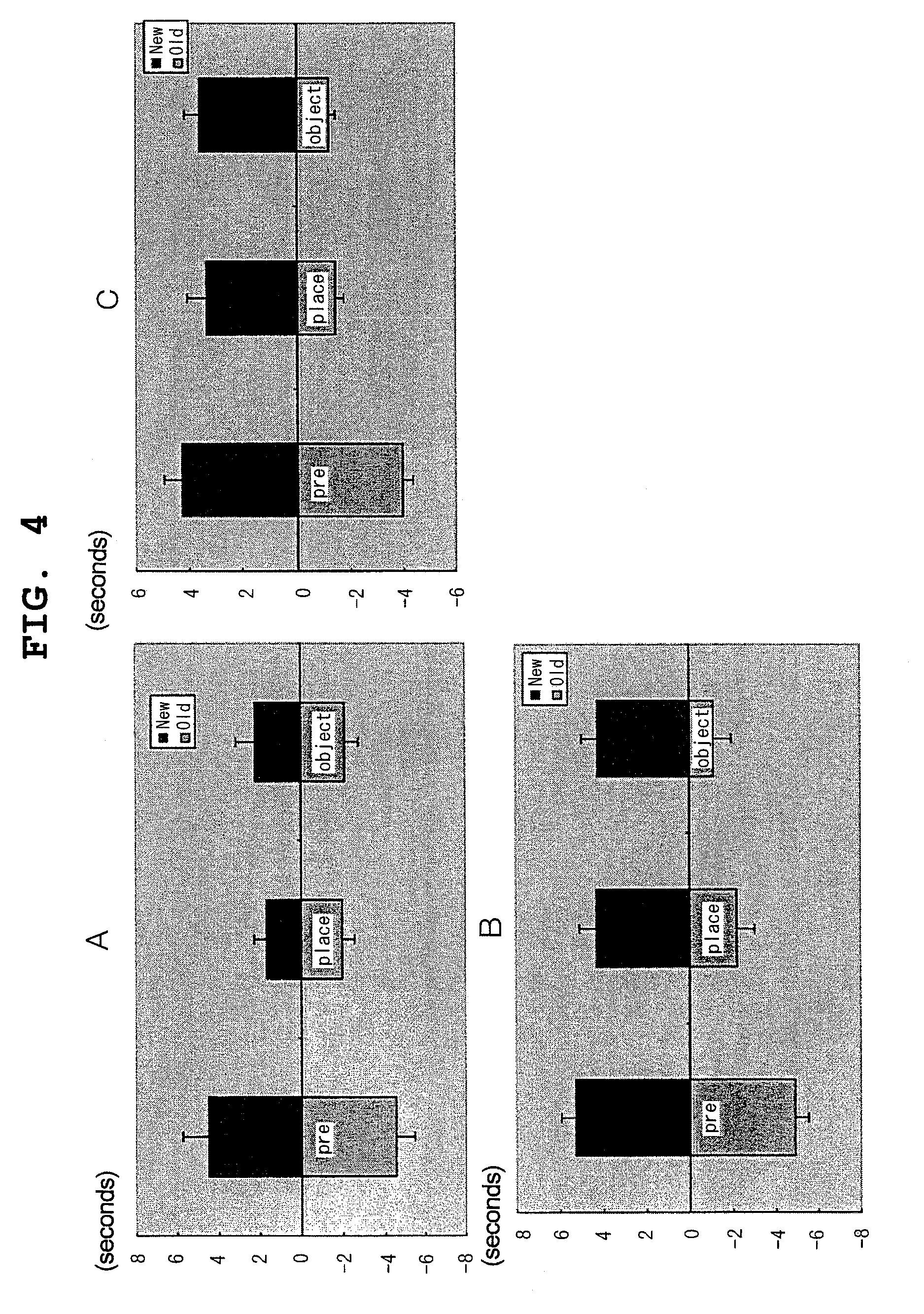Agent for ameliorating brain hypofunction
a brain and hypofunction technology, applied in the field of agents for enhancing brain hypofunction, can solve the problems of drug resistance and drug dependence in prolonged use, drug use does not improve “the quality of sleep, and no drugs are available to ameliorate learning and memory disorders that develop, so as to delay the decrease in brain function, improve metabolism, and reduce brain function
- Summary
- Abstract
- Description
- Claims
- Application Information
AI Technical Summary
Benefits of technology
Problems solved by technology
Method used
Image
Examples
example 1
Recovery from Brain Functional Disorders Such as Aging-Related Deteriorations of Object Memory and Place Memory Using ManNAc
1) Object and place recognition task experiments were performed on male C57BL6 / Njcl mice in three groups. Outline of the experiments is shown in FIG. 1.
Old control group: Old mice (reared from 47 to 66 weeks of age, n=10) were allowed to drink tap water ad libitum.
Old ManNAc recipient group: Old mice (reared from 47 to 66 weeks of age, n=10) were allowed to drink tap water with ManNAc (5 mg / ml) dissolved therein ad libitum.
Young control group: Young mice (reared from 8 to 18 weeks of age, n=10) were allowed to drink tap water ad libitum.
2) Experimental procedures: An open field test was performed to examine the tendency toward anxiety and locomotor activity, and this was followed by place recognition task and object recognition task in accordance with conventional methods (see FIG. 2).
3) Experimental results (FIGS. 3 and 4)
[0074]Open field test (FIG. 3): Moving...
example 2
Recovery from Aging-Related Sleep Disorders Using ManNAc
[0077]Mice are awake during active time in the dark phase and conversely cease their activities and have a sleep in the light phase. It is known that in aged mice, the wake-sleep rhythm is deranged to the extent of lighter sleep in the light phase and decreased activities during wake time in the dark phase. It is also known that the aging-related derangement of wake and sleep is related to hypothalamic activity and accompanied by elevated body temperatures and increased heart rates. Because these symptoms are similar to those in human patients in their middle age to senescence who complain of dissatisfaction with sleep, they serve as an appropriate model for examining the influences on sleep.
[0078]Middle-aged mice [three reared from 43 to 66 weeks of age under light-dark cycle conditions (12-hour light phase-12-hour dark phase)] were allowed to drink ManNAc solution (5 mg / ml tap water) ad libitum. During 1 week before and after...
PUM
| Property | Measurement | Unit |
|---|---|---|
| drug resistance | aaaaa | aaaaa |
| length | aaaaa | aaaaa |
| stress | aaaaa | aaaaa |
Abstract
Description
Claims
Application Information
 Login to View More
Login to View More - R&D
- Intellectual Property
- Life Sciences
- Materials
- Tech Scout
- Unparalleled Data Quality
- Higher Quality Content
- 60% Fewer Hallucinations
Browse by: Latest US Patents, China's latest patents, Technical Efficacy Thesaurus, Application Domain, Technology Topic, Popular Technical Reports.
© 2025 PatSnap. All rights reserved.Legal|Privacy policy|Modern Slavery Act Transparency Statement|Sitemap|About US| Contact US: help@patsnap.com



